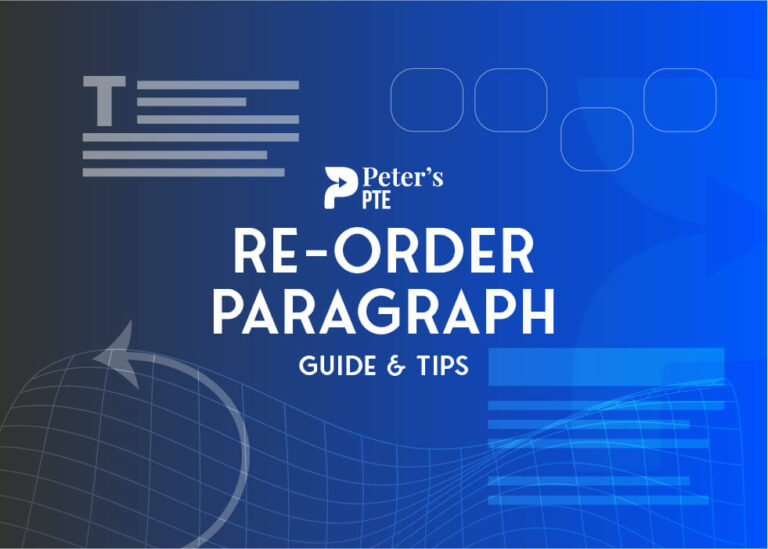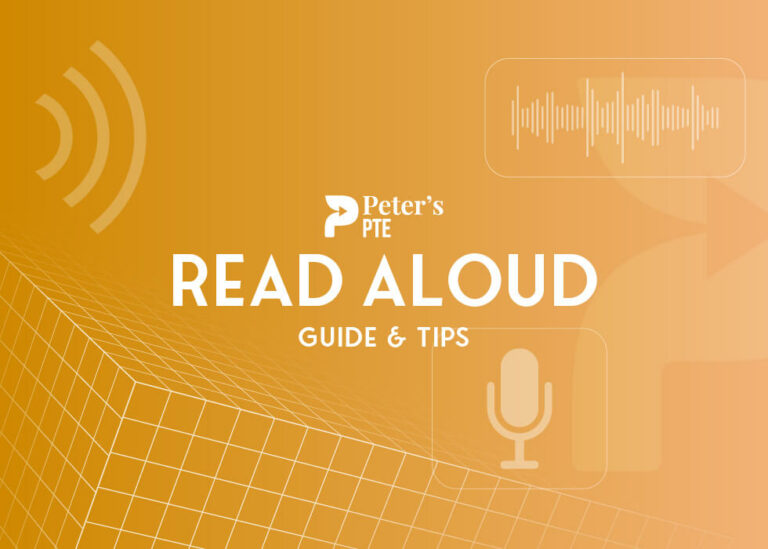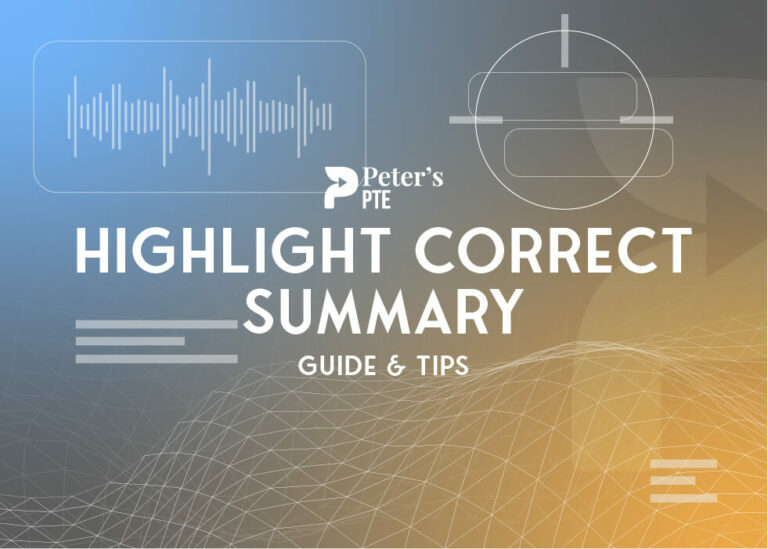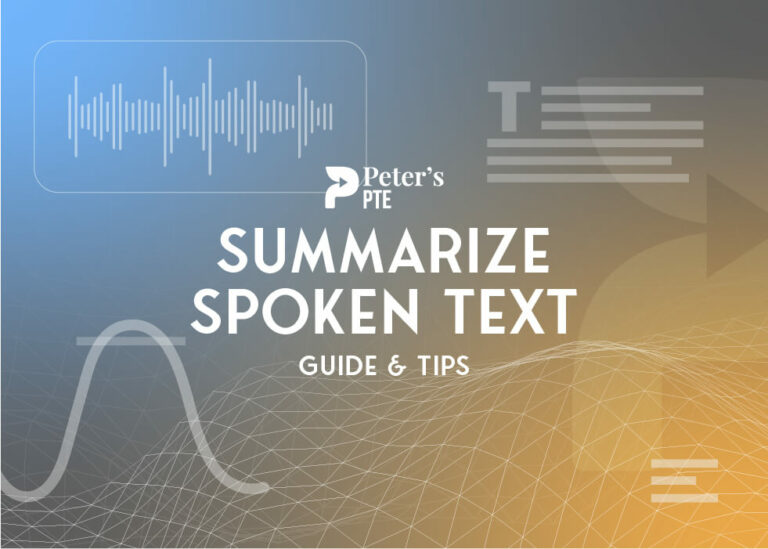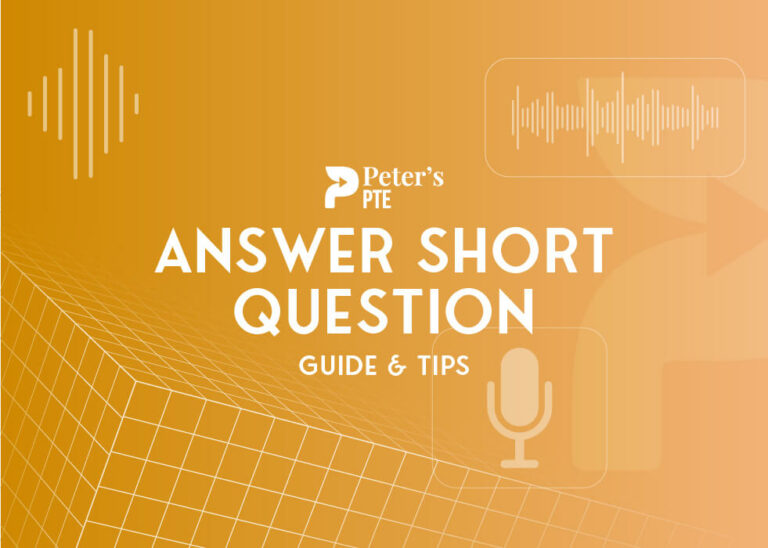The PTE Academic exam assesses various language skills, including the ability to describe images accurately and effectively. The “Describe Image” task is a crucial part of the speaking section, where test-takers are presented with an image and have 40 seconds to provide a detailed description. Success in this task requires keen observation, clear articulation, and a well-organized response. In this comprehensive guide, we will explore the format of the PTE Describe Image section, understand the scoring criteria, and provide you with valuable tips and strategies to excel in this challenging component of the exam. Whether you’re new to the PTE Academic test or looking to enhance your image description skills, this guide will help you master the “Describe Image” task.
Describe Image Format
The “Describe Image” task assesses your speaking skills and your ability to provide a comprehensive description of visual content. Here’s an overview of the format and scoring criteria:
- You’ll be presented with an image that could be a graph, table, map, chart, diagram, or even a photograph.
- You have 25 seconds to observe the image and prepare your response.
- After this preparation time, you have 40 seconds to describe the image.
How Is It Scored?
The PTE Describe Image is scored based on three primary factors: Content, Oral fluency, and Pronunciation.
Scoring Factor
- 5 Score: Describes all elements of the image and their relationships, possible development and conclusion or implications
- 4 Score: Describes all the key elements of the image and their relations, referring to their implications or conclusions
- 3 Score: Deals with most key elements of the image and refers to their implications or conclusions
- 2 Score: Deals with only one key element in the image and refers to an implication or conclusion. Shows basic understanding of several core elements of the image
- 1 Score: Describes some basic elements of the image, but does not make clear their interrelations or implications
- 0 Score: Mentions some disjointed elements of the presentation. May not deal properly with the prompt due to significant amounts of pre-prepared/memorized material.
Scoring Levels – Pronunciation and Oral fluency
Pronunciation
| Score Level | Scoring criteria |
|---|---|
| 5 – Native-like | All vowels and consonants are produced in a manner that is easily understood by regular speakers of the language. The speaker uses assimilation and deletions appropriate to continuous speech. Stress is placed correctly in all words and sentence-level stress is fully appropriate. |
| 4 – Advanced | Vowels and consonants are pronounced clearly and unambiguously. A few minor consonant, vowel or stress distortions do not affect intelligibility. All words are easily understandable. A few consonants or consonant sequences may be distorted. Stress is placed correctly on all common words, and sentence level stress is reasonable. |
| 3 – Good | Most vowels and consonants are pronounced correctly. Some consistent errors might make a few words unclear. A few consonants in certain contexts may be regularly distorted, omitted or mispronounced. Stress- dependent vowel reduction may occur on a few words. |
| 2 – Intermediate | Some consonants and vowels are consistently mispronounced in a non- native like manner. At least 2/3 of speech is intelligible, but listeners might need to adjust to the accent. Some consonants are regularly omitted, and consonant sequences may be simplified. Stress may be placed incorrectly on some words or be unclear. |
| 1 – Intrusive | Many consonants and vowels are mispronounced, resulting in a strong intrusive foreign accent. Listeners may have difficulty understanding about 1/3 of the words. Many consonants may be distorted or omitted. Consonant sequences may be non-English. Stress is placed in a non-English manner; unstressed words may be reduced or omitted, and a few syllables added or missed. |
Oral fluency
| Score Level | Scoring criteria |
|---|---|
| 5 – Native-like | Speech shows smooth rhythm and phrasing. There are no hesitations, repetitions, false starts or non-native phonological simplifications. |
| 4 – Advanced | Speech has an acceptable rhythm with appropriate phrasing and word emphasis. There is no more than one hesitation, one repetition or a false start. There are no significant non-native phonological simplifications. |
| 3 – Good | Most vowels and consonants are pronounced correctly. Some consistent errors might make a few words unclear. A few consonants in certain contexts may be regularly distorted, omitted or mispronounced. Stress- dependent vowel reduction may occur on a few words. |
| 2 – Intermediate | Some consonants and vowels are consistently mispronounced in a non- native like manner. At least 2/3 of speech is intelligible, but listeners might need to adjust to the accent. Some consonants are regularly omitted, and consonant sequences may be simplified. Stress may be placed incorrectly on some words or be unclear. |
| 1 – Intrusive | Many consonants and vowels are mispronounced, resulting in a strong intrusive foreign accent. Listeners may have difficulty understanding about 1/3 of the words. Many consonants may be distorted or omitted. Consonant sequences may be non-English. Stress is placed in a non-English manner; unstressed words may be reduced or omitted, and a few syllables added or missed. |
Always Remember
- Maintain a smooth and uninterrupted flow in your speech by avoiding unnecessary fillers like ‘um’ and ‘uh.’ This contributes significantly to your overall fluency and scoring.
- You don’t need to speak for the entire 40 seconds; in fact, it’s advisable to conclude your description before the 30-second mark. This approach can still earn you a high score.
- Keep in mind that every instance of word replacement, omission, or insertion is considered an error. While the content is important, remember that impeccable oral fluency and clear pronunciation are even more crucial for a favorable evaluation.
- Your language should feel natural, so avoid the temptation to incorporate unfamiliar or complex words that might make you sound forced. The aim is to convey your message clearly and accurately.
- Work on your response structure until it becomes polished and flawless, ensuring your description flows effortlessly.
Describe Image Practice Tips
Writing All Over Tips
- Identify the main idea and key details.
- Organize your description logically.
- Focus on key points and be concise.
- Avoid fillers and hesitations in your speech.
- Manage your time efficiently.
- Prioritize oral fluency and clear pronunciation.
- Use language comfortably and naturally.
- Practice regularly and seek feedback for improvement.
Bar/Line Graph Tips
- Check the axes and labels to understand measured variables.
- Identify key features: highest, lowest points, trends, outliers.
- Make comparisons between variables, periods, or categories.
- Use specific numbers and percentages from the graph.
- Organize your response with intro, main points, and conclusion.
Table Tips
- Focus on the title and variables.
- Identify three key features: the highest, the lowest, and one other significant aspect.
- Use specific numbers and percentages for accuracy.
- Establish connections between these key features for coherence.
- Provide context by briefly mentioning the year or period to set the scene for your description.
Map Tips
- Focus on crucial map elements like locations, landmarks, and changes over time.
- Use directional language (e.g., north, south, east, west) for clarity.
- Highlight changes and patterns, especially when they’re evident.
- Make comparisons between different areas or aspects on the map to provide a comprehensive description.
Pie Chart/ Flow Chart
- Understand the overall process or sequence, noting start and end points and the flow direction.
- Identify and mention the major steps or stages in the process.
- Use linking language to connect the steps logically.
- Highlight how the process progresses, including decision points and outcomes.
- Visualize the flow to maintain a structured description and cover all essential points.
Venn Diagram
- Identify logical sets within the diagram.
- Focus on overlapping areas to highlight shared components.
- Detail unique characteristics of each set.
- Use comparative language to distinguish between sets.
- Summarize overall overlaps and shared characteristics in your conclusion.
Photo Tips
- Observe the photo carefully during the preparation time.
- Identify three main points or features to describe.
- Create a logical and coherent story connecting these points.
- Avoid over-explanation and stay focused on the main elements.
Conclusion
In conclusion, mastering the PTE Describe Image task requires a combination of observation, organization, and effective communication. By following the provided tips, templates, and practicing regularly, you can significantly enhance your performance in this section. Remember that while content is vital, oral fluency and pronunciation play a crucial role in achieving a high score. With dedication and practice, you can confidently tackle the “Describe Image” task and succeed in the PTE Academic exam. Good luck on your PTE journey!

